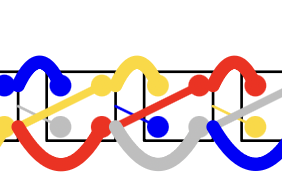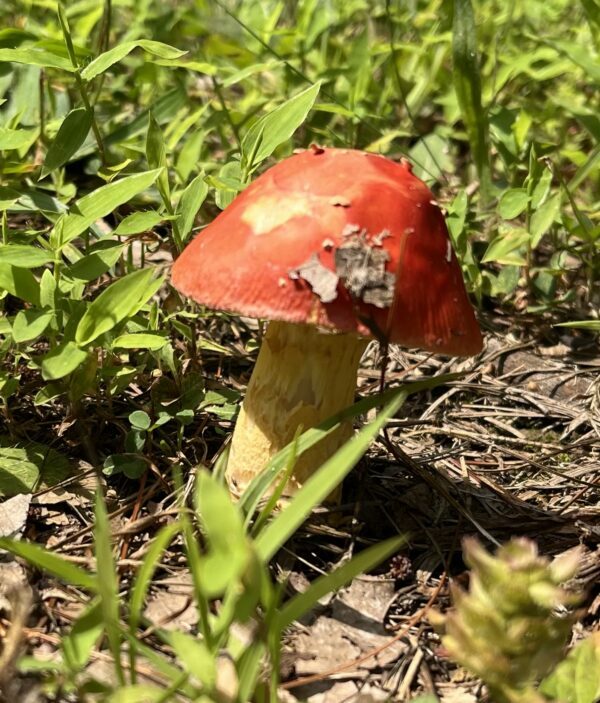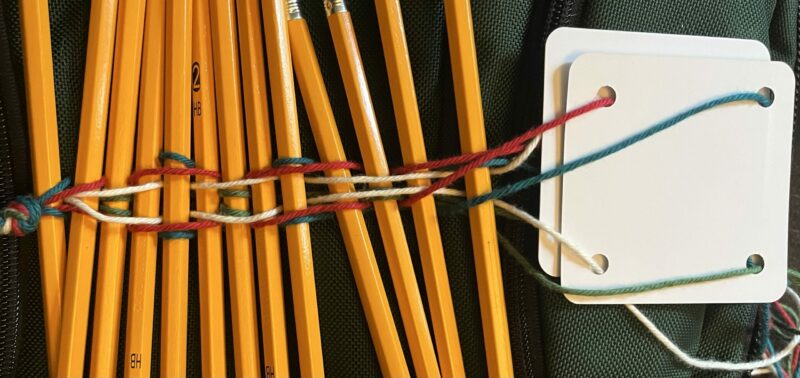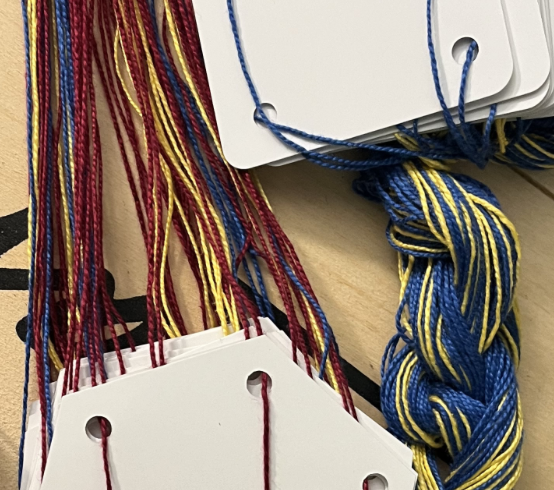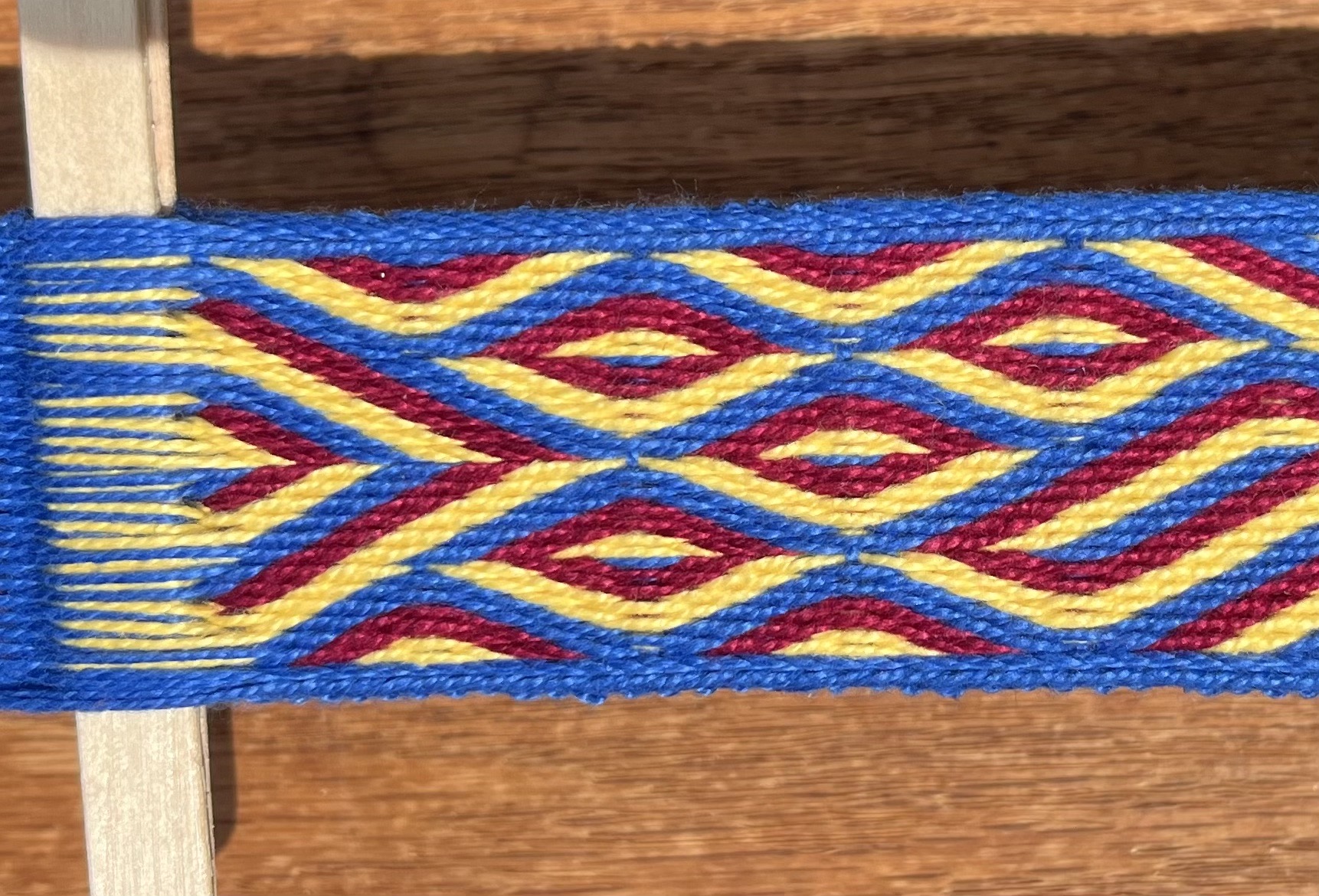I taught a new class at Complex Weavers in late September, on edge finishes for woven textiles, both warp and weft. I thought I was going to get the bibliography cleaned up and posted weeks ago, but since that hasn’t happened yet, I’m going to just go ahead and post it as is.
The class turned into an odd mix of library tour, show and tell, practical information, and philosophy of craft production. I wasn’t sure how it would go over, but my students liked it. They demanded to see more about certain textiles, and asked lots of questions.
I made the point that the two-bar horizontal loom was the height of weaving technology from a structural perspective, and that everything we’ve done since then to improve efficiency has simultaneously limited the structural possibilities. The turning point was the switch from knitted string heddles to eyed heddles: once the weaver has to cut the warp, there cannot be four woven selvages.
I illustrated a variety of finishes for side selvages and both looped and cut warp ends drawn from historical and ethnographic material, mostly early northern Europe and South America.
I received an excellent compliment: one of the women in my class approached me the next day to tell me that she’d lain awake in bed thinking about how to use the ideas I presented in her own work. WIN.
I can’t share most of the material I presented, but I can give you all the bibliography. Here are the sources I drew from:
Alvarez, Nilda Callanaupa. 2007. Weaving in the Peruvian Highlands. Interweave Press.
Atwater, Mary M. The finish of edges.
Broudy, Eric. The Book of Looms
Cahlander, Adele and Marjorie Cason. 1977. A tubular edge-binding from Bolivia. Weaver’s Journal 1(4):13-15.
Collingwood, Peter. Techniques of Rug Weaving.
Gillis, Carole and Marie-Louise B. Nosch. 2007. Ancient Textiles: Production, Craft and Society. Oxbow Books.
Hald, Margrethe. 1980. Ancient Danish Textiles from Bogs and Burials. National Museum of Denmark.
Heckett, Elizabeth Wincott. 2003. Viking Age Headcoverings from Dublin. National Museum of Ireland.
Hundt, Hans-Jurgen. 1981. Die Textil- un Schnurreste aus der Fruhgeschichtlichen wurt Elisenhof. Peter D. Lang, Frankfurt.
King, Mary Elizabeth. An unusual border construction from Peru. 22-37.
Moller-Wiering, Susan. 2011. War and Worship: Texiles from 3rd to 4th-century AD Weapon Deposits in Denmark and Northern Germany. Oxbow Books.
Posselt’s Textile Journal, January 1914. Manufacture of narrow wares.
Sewell, Suzy. Peruvian tapestery. Minnesota Weaver 19-21.
Here’s one of the quotations I used to introduce the topic:
Speaking of ancient Peruvians reminds me that most new weavers are too casual about edge finishes, with a tendency toward stringy fringes and unbeautiful resolutions to borders. I ask them to look at ancient cloths to realize that if those weavers were short on time, they would concentrate on the border only with the center field in a simple plain weave. The way that we braid or stitch or otherwise resolve the beginnings and endings can be an important aspect of the design.
-An Interview with Jack Lenor Larsen, The Weaver’s Journal, Summer 1982, 10-17.

